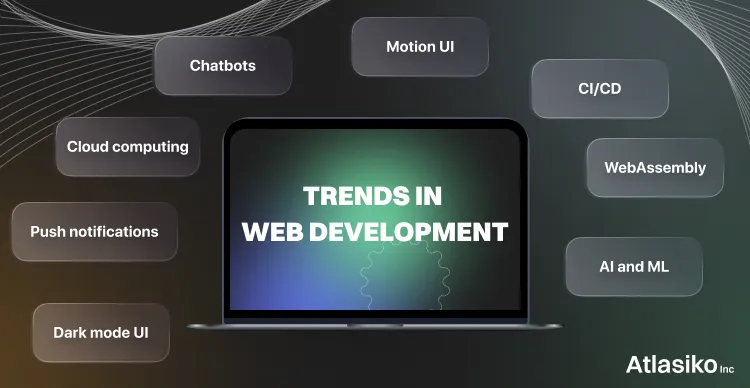Modern Web Development Trends
Exploring the latest trends in web development and design for 2025 and beyond.

Introduction
In 2025, web development is evolving rapidly with emerging technologies and shifting user expectations. Businesses aiming for an impactful online presence must adapt to these modern trends to stay competitive, improve user experience, and drive growth. This article explores the most influential web development trends that are shaping the digital landscape.
1. Progressive Web Apps (PWAs)
PWAs continue to gain traction as they blend the best of web and mobile apps. They offer offline access, push notifications, and faster load times, enhancing user engagement without the need for native apps. Companies like Twitter and Starbucks have already seen massive success with PWAs.
2. AI-Powered Chatbots & Virtual Assistants
Artificial Intelligence is revolutionizing customer support with smarter, more conversational chatbots. These AI-driven assistants provide 24/7 support, handle FAQs, and personalize user interactions, significantly improving customer satisfaction and reducing operational costs.
3. Motion UI & Micro-Interactions
Visual storytelling through animations, motion UI, and micro-interactions enhances user engagement. Subtle hover effects, loading animations, and scroll-triggered animations make websites more interactive and visually appealing, providing a richer user experience.
4. Voice Search Optimization
With the rise of smart speakers and voice assistants, optimizing websites for voice search is no longer optional. Implementing conversational keywords, structured data, and fast-loading pages ensures better visibility in voice search results.
5. Headless CMS Architecture
Headless CMS allows developers to decouple the front-end from the back-end, offering greater flexibility in content delivery across multiple platforms like websites, mobile apps, and IoT devices. This trend supports faster development cycles and enhanced omnichannel experiences.
6. API-First Development
API-first design ensures seamless integration of services and facilitates collaboration between teams. It enables businesses to scale efficiently by connecting various systems, improving functionality, and reducing time-to-market for new features.
7. Cybersecurity-First Approach
With increasing cyber threats, web developers are prioritizing security at every development phase. Implementing HTTPS, multi-factor authentication, data encryption, and regular security audits are essential practices in modern web development.
8. Low-Code & No-Code Development
Low-code and no-code platforms democratize web development by enabling non-technical users to build and deploy applications quickly. These tools accelerate digital transformation and reduce the dependency on large development teams.
9. Green Hosting & Sustainable Web Design
Environmental consciousness is influencing web development strategies. Companies are adopting green hosting solutions and optimizing websites for energy efficiency by reducing server loads, minimizing resource usage, and prioritizing eco-friendly design practices.
10. Augmented Reality (AR) Experiences
AR integration is transforming e-commerce, real estate, and education sectors by offering immersive experiences. From virtual try-ons to interactive product demos, AR enhances user engagement and boosts conversion rates.
Conclusion
Staying updated with modern web development trends is crucial for businesses aiming to deliver exceptional digital experiences. Embracing these trends not only improves website performance but also drives user engagement, SEO rankings, and overall business growth.
As technology continues to evolve, adaptability and innovation will remain key to staying ahead in the competitive digital landscape.